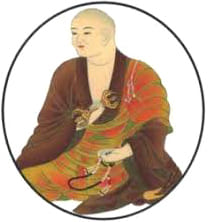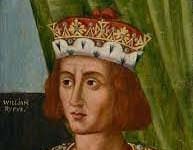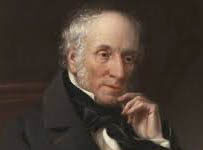Kukai | Kobo Daishi | Brief Biography
Kukai | Kobo Daishi
Kukai, also known as Kobo Daishi, was a Japanese Buddhist monk, scholar, and founder of the Shingon sect of Japanese Buddhism. He lived from 774 to 835 CE and is widely regarded as one of the greatest Japanese thinkers and writers of his time.
Kukai was born in Shikoku, Japan, the son of a local chieftain. As a young man, he showed a keen interest in religion and spirituality and eventually decided to become a monk. He began his monastic training at the age of 15, studying under several different teachers and learning about various Buddhist teachings and practices.
In 804, Kukai traveled to China in order to deepen his understanding of Buddhism. There, he studied under the famous master Hui-Kuo and learned about the esoteric teachings of the Shingon sect. Upon his return to Japan in 806, he founded the Shingon sect in Japan and quickly gained a large following.
Kobo Daishi was known for his deep understanding of Buddhist philosophy, as well as his expertise in a wide range of subjects including literature, calligraphy, and architecture. He was a prolific writer and is credited with composing numerous works on Buddhist teachings, including the “Maha-Vairocana-Abhisambodhi-Tantra,” which is considered one of the most important texts in the Shingon tradition.
In addition to his work as a teacher and writer, Kukai was also known for his humanitarian efforts. He was a strong advocate for the education of women and founded several schools for girls in Japan. He also worked to improve the lives of the poor and oppressed and was widely revered for his compassionate and selfless spirit.
In 835, Kobo Daishi passed away at the age of 61. Despite his death, his influence continued to grow, and he was later posthumously declared a saint by the Japanese emperor. Today, Kukai is remembered as a great master of Buddhism, a brilliant scholar, and a pioneer of esoteric Buddhism in Japan.
Kukai’s legacy continues to be felt in Japan and around the world. His teachings and writings continue to be studied and revered by Buddhists and non-Buddhists alike, and his influence can be seen in many aspects of Japanese culture, including art, literature, and architecture. In addition, the many temples and shrines associated with Kukai, including the famous Mount Koya in Wakayama Prefecture, attract thousands of visitors each year and serve as a testament to his enduring legacy as one of Japan’s greatest thinkers and spiritual leaders. 0 0 0.
Kukai (Kobo Daishi): Comprehensive Biography
Introduction
Kukai (774-835 A.D.), also known posthumously as Kobo Daishi, was a prominent Japanese Buddhist monk, scholar, poet, calligrapher, and founder of the Shingon (True Word) school of esoteric Buddhism. He is considered one of Japan’s most influential religious figures, a master of both the spiritual and literary arts. Kukai’s legacy is deeply embedded in Japan’s religious, cultural, and artistic landscape.
Early Life
Kukai was born in 774 A.D. in the village of Byobugaura, located in present-day Zentsuji, Kagawa Prefecture, Japan. His childhood name was Mao, and he came from a family of aristocratic lineage, his father being a provincial governor. From an early age, Kukai demonstrated exceptional intelligence and curiosity about spiritual matters. He initially entered Confucian studies in the capital of Kyoto, aiming for a career as a government official. However, his growing disillusionment with secular life led him to discover Buddhism.
Spiritual Awakening
At the age of 19, Kukai experienced a profound spiritual awakening, during which he reportedly recited a mantra from the Mahavairocana Sutra, an essential text of esoteric Buddhism. This inspired him to abandon his Confucian studies and immerse himself in Buddhist teachings. Kukai sought out secluded places to meditate and devoted himself to the study of Buddhist texts, particularly texts dealing with esoteric practices.
Journey to China
In 804, Kukai was granted permission by the Japanese government to travel to China to study Buddhism in more depth. During his time in the Tang Dynasty (China), he studied under the great master Huiguo (Keika in Japanese) at Qinglong Monastery in Chang’an. Huiguo was the seventh patriarch of the esoteric Buddhist tradition known as *Vajrayana* or ‘Tantric Buddhism’. Recognizing Kukai’s potential, Huiguo taught him the full teachings of esoteric Buddhism, and declared him the successor of this profound spiritual tradition. Kukai was greatly influenced by Chinese Buddhist doctrines, Indian scriptures, and the vast cosmological vision presented by esoteric Buddhism.
Return to Japan and the Establishment of Shingon Buddhism
Kukai returned to Japan in 806 A.D., bringing with him many sutras, mandalas, ritual tools, and other esoteric teachings. He founded the Shingon school, and introduced Japan to ‘mikkyo’ (esoteric teachings), which emphasized ritual, meditation, and the concept of attaining Buddhahood in one’s lifetime. Shingon Buddhism is characterized by its rich symbolism, its use of mudras (hand gestures), mantras (sacred words), and mandalas (sacred diagrams), which Kukai regarded as essential tools for spiritual enlightenment.
Kukai’s fame grew rapidly. In 809, he was appointed abbot of To-ji Temple in Kyoto, where he established the first esoteric Buddhist seminary. He also founded the great monastic complex on Mount Koya (Koyasan) in 816, which became the headquarters of Shingon Buddhism. Kukai’s teachings emphasized the unity of all beings and the belief that enlightenment could be achieved through the direct experience of the cosmic Buddha, Mahavairocana.
Writings and Literary Contributions
Kukai was not only a religious leader but also a prolific writer and scholar. He wrote widely on Buddhism, ethics, and philosophy, contributing significantly to Japan’s literary and educational traditions. One of his most famous works is the Ten Abiding Stages of Mind, in which he outlines a comprehensive model of spiritual development, showing how one can progress from worldly concerns to enlightenment.
He also wrote poetry, often combining religious themes with elements of nature and human experience. Kukai is known for his calligraphy, and he helped create a new style of Japanese script known as shodo. His contributions to the development of the Japanese writing system, including the popularization of kana (phonetic syllabaries), have had a lasting impact on Japanese culture.
Legacy as Kobo Daishi
After his death in 835, Kukai was given the honorific title of Kobo Daishi (“Great Teacher who spreads the Dharma”) by Emperor Daigo in 921, acknowledging his enormous influence on the spiritual life of Japan. According to legend, Kukai did not die but went into eternal meditation at Okunoin on Mount Koya, where he is believed to remain to this day in a state of nyujo (deep meditation), awaiting the arrival of Maitreya, the future Buddha.
Mount Koya is one of Japan’s most sacred pilgrimage sites, and Kukai’s shrine at Okunoin draws millions of visitors each year. Pilgrims often make the Shikoku Pilgrimage, a circuit of 88 temples on Japan’s Shikoku island, many of which are believed to have been founded by Kukai.
Influence on Japanese Culture
Kukai’s contributions extended beyond the realm of religion. He played an important role in promoting culture.
Kukai (Kobo Daishi): Data in Brief
- Full Name: Kukai (Posthumously known as Kobo Daishi)
- Birth: 774 CE, Byobugaura (Zentsuji), Japan
- Death: 835 CE, Mount Koya, Japan
- Title: Buddhist monk, scholar, poet, calligrapher, founder of Shingon Buddhism
- Primary Contribution: Established the Shingon (True Word) school of esoteric Buddhism in Japan
- Significant Influence: Introduced esoteric Buddhism (Vajrayana) to Japan; emphasized rituals, mantras, mudras, and mandalas for spiritual enlightenment
- Journey to China: Studied under Huiguo (Keika) in Tang dynasty China; returned with esoteric Buddhist teachings in 806 CE
Key Accomplishments:
- Founded Mount Koya monastery (Koyasan), now a major pilgrimage site Established Shingon headquarters at Tō-ji Temple, Kyoto
- Authored philosophical works like ‘Ten Abiding Stages of Mind’
- Developed and popularized ‘Kana’ script in Japanese writing
- Cultural Contributions: Calligraphy, poetry, and the development of Japan’s public education system
- Legacy: Revered as he, believed to be in eternal meditation at Okunoin (Mount Koya); honored through the Shikoku pilgrimage (88 temples)
FAQs about Kukai (Kobo Daishi)
Who was Kukai (Kobo Daishi)?
Kukai, also known posthumously as Kobo Daishi, was a Japanese Buddhist monk, scholar, and the founder of the Shingon school of esoteric Buddhism. He is one of Japan’s most influential religious and cultural figures.
When and where was Kukai born?
Kukai was born in 774 CE in Byobugaura, which is now part of Zentsuji, Kagawa Prefecture, Japan.
What is Kukai known for?
He is best known for introducing esoteric Buddhism (‘Mikkyō’) to Japan and establishing the Shingon sect. He is also recognized for his contributions to Japanese writing, particularly the development of the Kana script, as well as his calligraphy and poetry.
What is Shingon Buddhism?
Shingon Buddhism is a form of esoteric or tantric Buddhism that focuses on rituals, mantras, and meditation to attain enlightenment. It emphasizes the concept of achieving Buddhahood in one’s lifetime through direct experience of the cosmic Buddha, Mahavairocana.
Why did Kukai travel to China?
He traveled to China in 804 CE to study esoteric Buddhist teachings. He became a disciple of the Chinese master Huiguo (Keika) and received full transmission of the esoteric teachings before returning to Japan in 806 CE.
What did Kukai do after returning from China?
After returning from China, he established the Shingon school of Buddhism in Japan. He founded Mount Koya as the headquarters of Shingon Buddhism and became the abbot of Tō-ji Temple in Kyoto.
What is Kukai’s legacy?
He legacy includes the founding of Shingon Buddhism, contributions to Japanese culture through literature and calligraphy, and the establishment of a public education system in Japan. He is also venerated for his deep spiritual teachings and remains a central figure in Japanese Buddhism.
What is the significance of Mount Koya (Koyasan)?
Mount Koya is where He established the headquarters of Shingon Buddhism in 816 CE. It remains a major pilgrimage site, and Kukai’s tomb at Okunoin is considered a sacred place where he is believed to remain in eternal meditation.
What is the Shikoku pilgrimage, and how is it related to Kukai?
The Shikoku pilgrimage is a circuit of 88 Buddhist temples on Japan’s Shikoku Island. Many of these temples are associated with Kukai, and the pilgrimage honors his life and teachings.
What did Kukai contribute to Japanese writing?
He helped popularize the Kana script, a phonetic syllabary used in the Japanese writing system. His contributions to calligraphy are also highly regarded in Japanese culture.
What is Kukai’s posthumous title, and what does it mean?
He was given the posthumous title ‘Kobo Daishi’ by Emperor Daigo in 921 CE. The title means “Great Teacher who spread the Dharma,” reflecting his influence in spreading Buddhist teachings in Japan.
Why is Kukai believed to be in eternal meditation?
According to legend, Kukai did not die but entered into a deep state of meditation at his tomb in Okunoin, Mount Koya. He is believed to be in ‘nyujo’ (eternal meditation) and will remain so until the arrival of Maitreya, the future Buddha.
N. B. This article originally belongs to the book, ‘Brief Biographies of Ancient Thinkers and Writers‘ by Menonim Menonimus.
Books of Biography by M. Menonimus:
- The World Writers-Brief Biographies
- Introduction to World Writers
- Introduction to World Personalities
- Love of Reputed Persons ..
Additional Searches:










